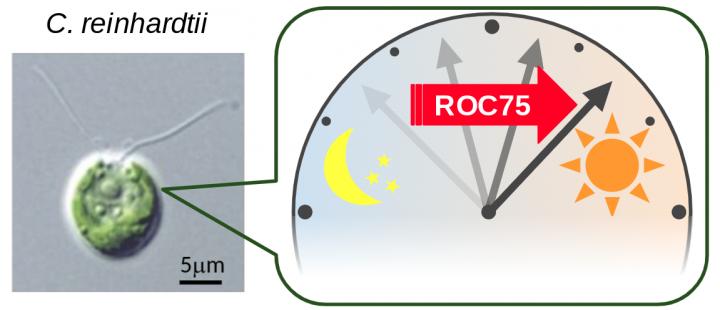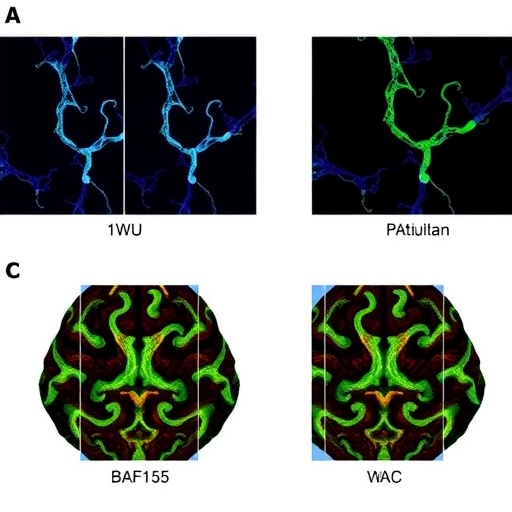The findings could be applied to making green algae produce more lipids — a possible source of biofuel.

Credit: Takuya Matsuo
A team of researchers from Nagoya University, Japan, has found the mechanism of the night-to-day transition of the circadian rhythm in green algae. The findings, published in the journal PLOS Genetics, could be applied to green algae to produce larger amounts of lipids, which are a possible sustainable source of biofuel.
Green algae are photosynthetic organisms that live mainly in lakes and ponds and produce lipids internally. Like most organisms, green algae have a circadian clock, which regulates their daily photosynthetic activities. The mechanism of their circadian clocks, however, had not been previously explained.
The team of Takuya Matsuo of the Center for Gene Research and colleagues at Nagoya University has been conducting studies on circadian clocks using Chlamydomonas reinhardtii, a species of freshwater green algae.
“We had previously found that a gene called ROC75 is involved in the circadian rhythm of C. reinhardtii in some way,” says Matsuo. In the new study, the team further investigated the role of ROC75 in the same species. The results suggest that the ROC75 gene functions from dawn through the day and helps change the green alga’s circadian phase from night to daytime by suppressing the activity of night-phased clock genes.
To demonstrate it, the team artificially controlled the activity of ROC75. When ROC75 was inhibited, the alga’s circadian rhythm wasn’t observed. Then, when the activity of ROC75 was restored, the circadian rhythm resumed. Also, through multiple experiments, the researchers found that the alga’s circadian clock restarted, ticking consistently just as if the morning had come. The team thus concluded that ROC75 plays a crucial role in changing green algae’s circadian phase from night to daytime.
“This study showed that by controlling the activity of ROC75, we can wake up green algae whenever we want and thereby enhance their photosynthetic activities. In this way, we could make green algae produce larger amounts of lipids that can be converted into biofuel,” says Matsuo.
“The role of ROC75 that we found may reflect a survival strategy used by green algae after the species decided to continue to live in water during its evolution. I believe this study takes a step forward in understanding the mechanism and the evolutionary history of circadian clocks in green plants.”
###
The paper, “The role of ROC75 as a daytime component of the circadian oscillator in Chlamydomonas reinhardtii,” was published in the journal PLOS Genetics on June 17, 2020, at DOI: 10.1371/journal.pgen.1008814.
About Nagoya University, Japan
Nagoya University has a history of about 150 years, with its roots in a temporary medical school and hospital established in 1871, and was formally instituted as the last Imperial University of Japan in 1939. Although modest in size compared to the largest universities in Japan, Nagoya University has been pursuing excellence since its founding. Six of the 18 Japanese Nobel Prize-winners since 2000 did all or part of their Nobel Prize-winning work at Nagoya University: four in Physics – Toshihide Maskawa and Makoto Kobayashi in 2008, and Isamu Akasaki and Hiroshi Amano in 2014; and two in Chemistry – Ryoji Noyori in 2001 and Osamu Shimomura in 2008. In mathematics, Shigefumi Mori did his Fields Medal-winning work at the University. A number of other important discoveries have also been made at the University, including the Okazaki DNA Fragments by Reiji and Tsuneko Okazaki in the 1960s; and depletion forces by Sho Asakura and Fumio Oosawa in 1954.
Media Contact
Takuya Matsuo
[email protected]
Original Source
http://en.
Related Journal Article
http://dx.




